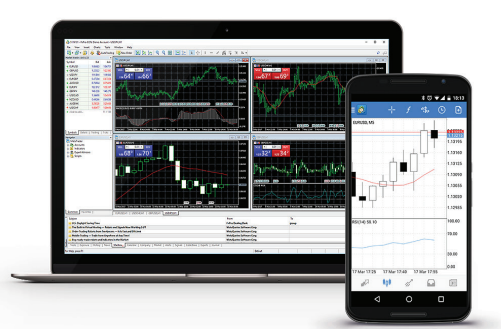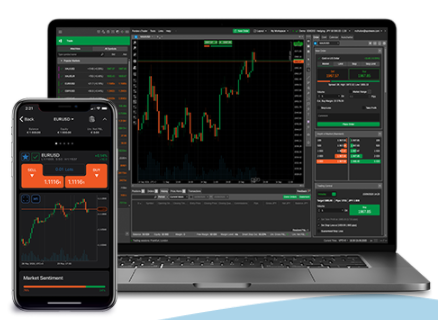What is CFD?

A CFD(Contract for Difference) is a derivative financial instrument which follows the price of the underlying asset. The profit or loss depends on the price movement of the asset.
The mechanism of this instrument is that two parties are agreeing to pay the difference between opening price and closing price instead of transacting the entire balance.
The underlying assets can be Forex, Indices, Stocks, Crypto, Precious Metals, Natual Gases and more! It enables a trader to trade and diversify risk among various asset classes. Hence, CFD brokers empower traders to both long and short the position while using leverage.
Why Should We Trade CFD?
1.Variety
- You can trade whichever asset classes you want. CFD products track multiple assets classes like Forex, Indices, Stocks, Crypto, Precious Metals, and Natual Gases.
- It offers you an opportunity to switch positions and execute event-driven trading.
2.Position Management
- In the traditional market, it is hard for retail investors to place a shorting position due to the possibility of influencing market prices.
- Luckily, for CFDs, you can freely not only to long but also short the positions as it is simply tracking the price of the underlying asset.
3.Trading Cost
- CFD brokers charge no fee or small fees to enter or exit orders.
- They generate revenue from the spread of the underlying asset.
- It may vary on the market condition but remains reasonable.
4.Leverage
- It is challenging to use leverage in the traditional market. In contrast, CFD requires a margin rate as little as 2%, which depends on the underlying asset.
- Low margin requirement allows you to leverage your fund with less capital to maximise your profit. But, always be cautious when using leverage.
5.Convenience
- CFDs operate 24hours a day, enabling traders to trade whenever they want.
- Big brokers offer thousands of CFD products to trade which allows you to catch more chances to gain profits.
PRO
CON
What to Trade in CFD?
Large brokers offer several asset classes with plenty amount of financial instruments to trade. They are majorly Indices, Stocks, Crypto, Precious Metals, and Natual Gases.
Takeaways
- CFD enables you to get immediate access to the global market.
- CFD offers a means for portfolio diversification and risk management.
- You can both long and short with leverages.
- You will get a dividend yield by holding stocks CFDs!
- It has transparent fees and commissions with tight spreads.
| CFDS | INSTRUMENTS |
| Cash Indices |
AUS200Cash, US100Cash, EU50Cash and more! |
| Futures Indices |
EU50, FRA40, GER30, JP225, US500, and more! |
| Precious Metals |
Gold, Silver, and Platinum. |
| Energies |
Brent oil, WTI oil, and Natural gas. |
| Commodities |
Cocoa, Coffee, Corn, Sugar, Bean, Cotton, Copper, and Wheat. |
| Stocks |
Apple. Google, Facebook, Netflix and more! |
| Crypto |
Bitcoin, Ethereum, Ripple, Litecoin and more! |
How is CFD working?
If a Indices has an ask-price of $100 and the trader buys 10 of them, you may need at least $1000 in a margin account of 50% at a traditional broker. For CFD broker, it offers a margin rate of 5%, which means you only need $50 to place a $1000 order.
CFD trade shows a loss after your place an order. The loss is the spread of the transaction, and you need to earn that spread to break-even. The trading fee is often already levied on the spread.
CFD is a derivative financial instrument tracking the price of underlying assets. And there could be price difference from the traditional market and the CFD market. Therefore, you can either have a better or worse bid price when you close your position.
What are the costs to trade CFDs?
Spread: Spread is the price difference between ask and bids price. It is compulsory to pay the spread for trading CFDs as it is the source of revenue for the CFD brokers. Thus, choosing the right broker with tight spread can help you to minimise the costs.
An ECN(Electronic Communication Network) Account has no spread but levy commission instead. People who use EA(Expert Advisor) prefer to use ECN account.
Commission (only for Stocks): Trading stocks CFDs charge you trading fees for exposing your position. The costs are usually 0.1% with a minimum of $5~$10 per transaction.
How to Trade CFDs?
1. Decide which Market to Trade.
- Choose the market you are familiar with.
- Indices, Stocks, Crypto, Precious Metals, or Natual Gases.
- And then look for specific instruments that you want to trade like Brent oil or Silver.
2. Long or Short
- Determine which direction of position you want to trade on.
- Would you like to Long(Buy) or Short(Sell)?
3. Size of Investment.
- Decide how much of your fund to invest.
- Brokers may have minimum margin requirements before you execute your orders.
4. Place an Order
- You can place an order with limit or market orders.
- Stop-loss or profit taking is also a great way to manage your risks.
5. Close the Deal
- After you placed your order, you can close the deal to take profits.
- Or if the market is moving unfavourably, you can close the deal to limit the losses.
Where Can I Learn About CFD Trading?
Websites
There are many websites that offer basic information about CFDs. Brokers usually have a good source of education to learn about them. It would be a great place to start with!
Books
Studying technical analysis will save more time compared to studying all the fundamentals of different asset classes. After knowing which strategy you want to approach, you can look for books that suit you!
Online Courses
There are beneficial videos in online education platforms. They might charge fees to take the online courses but consider it as an investment. But, make sure the person has a transparent tracking record and reliable, not selling useless courses for fast bucks.
Offline Courses
You can look for offline courses in your region. This is of the best way to ask questions directly and if lucky enough, you can find a mentor!
CFD Trading Platforms
MetaTrader4
MetaTrader 4 is a stand-alone online trading platform developed by MetaQuotes Software. It provides access to a range of markets and hundreds of different financial instruments, and you will have all the tools you need to manage your trades and analyse the markets.

MetaTrader5
MetaTrader 5 is the newest and most advanced online trading platform in the industry. It includes a multi-threaded strategy tester, fund transfer between accounts, and alerts to remind you of the latest events.

cTrader
cTrader is a brand-new trading platform that was established in 2010 by Spotware. It offers complete solutions for traders packed up with various features to enhance every aspect of your investment. It provides excellent indicators, advanced order types, fast entry, and execution. The User Interface is stunningly impressive and easy to understand the components.

Trading Strategies for CFDs
CFDs are a wide range of various asset classes. Therefore, every instrument has a different mechanism and price patterns in terms of how the price respond or move to specific events. It is hard to study every characteristic of all the asset classes.
Approaching various asset classes using technical analysis would be an excellent alternative way to analyse the market. Technical analysis is analysing the pattern of the price movement of an instrument. And chartist is the people who believe that the price reflects all the information such as events, policies, human psychology and more!
So, we think you should pick specific asset classes and instruments you would like to trade. Then study the history and characteristic of the instrument as well as chart patterns. After all, you can either use a demo account or a small amount of testing fund to get the feeling of live trading. When all is good, you can start generating profits!
Here are the ideas of trading strategies!
1.Breakout Strategy
- The breakout means an asset’s price moves above a resistance level or below a support level.
- A trader enters a long position when the price breaks the previous high and enters a short position when it breaks the previous low.
- A breakout occurs in a pattern of flags, triangles or head and shoulders patterns. Regardless of the timeframe, the breakout strategy works well in different CFDs.
2.Range Trading
- Range trading is to set the support and resistance price level to place orders around these prices.
- This strategy works when there are no large volatility and trend within the market.
- The length varies on the timeframe a trader is in favour of.
3.Trend Trading
- Trend trading is a widely used forex trading strategy by lots of traders worldwide.
- It is a strategy to gain profits based on the market directional momentum.
- The length of trading may vary depending on the indicator and timeframe analysis.
4.Scalp Trading
- Scalping is a strategy to trade within seconds to minutes, trading frequently to accumulate small profits which can be done manually or by the automated trading bot.
- Scalpers make an enormous amount of trades to take advantage of small price movements of a currency pair.
5.Day Trading
- Day trading is a strategy to trade a CFD within a day.
- As the positions are closed before the market close, it enables a trader to control its risk.
- It can be a matter of hours or even minutes, enabling a trader to execute multiple trades using technical analysis.
6.Swing Trading
- Swing trading refers to a trading style to hold a trade for several days to weeks.
- It is best suitable for the patient trader who does not mind the volatility of the market.
- Swing trading enables a trader to earn a big chunk of profits if the price moves in the trader’s favour.
Frequently Asked Questions
How does CFD (Contract for difference) work?
Unlike traditional financial instruments, traders do not have to own the securities physically. It is simply a contract engineered to gain profit from the difference in the price of security between the opening and closing of the contract. It offers the trader the opportunity to access global market with numerous asset classes conveniently.
Is CFD safe to trade or invest?
CFD (Contract for difference) is a derivative product that only tracks the price of an underlying asset. So, you do not own the instrument you trade. Therefore, the most important thing to consider is to choose the right counter-party, the CFD broker.
Can CFD trading make me rich?
It will depend on how you handle your fund. Since most CFD brokers offer low margin rate and high leverage, it can help you to maximise your profit. But in the meantime, it can be dangerous as well. Trading with a solid strategy and tactic would be vital to success.